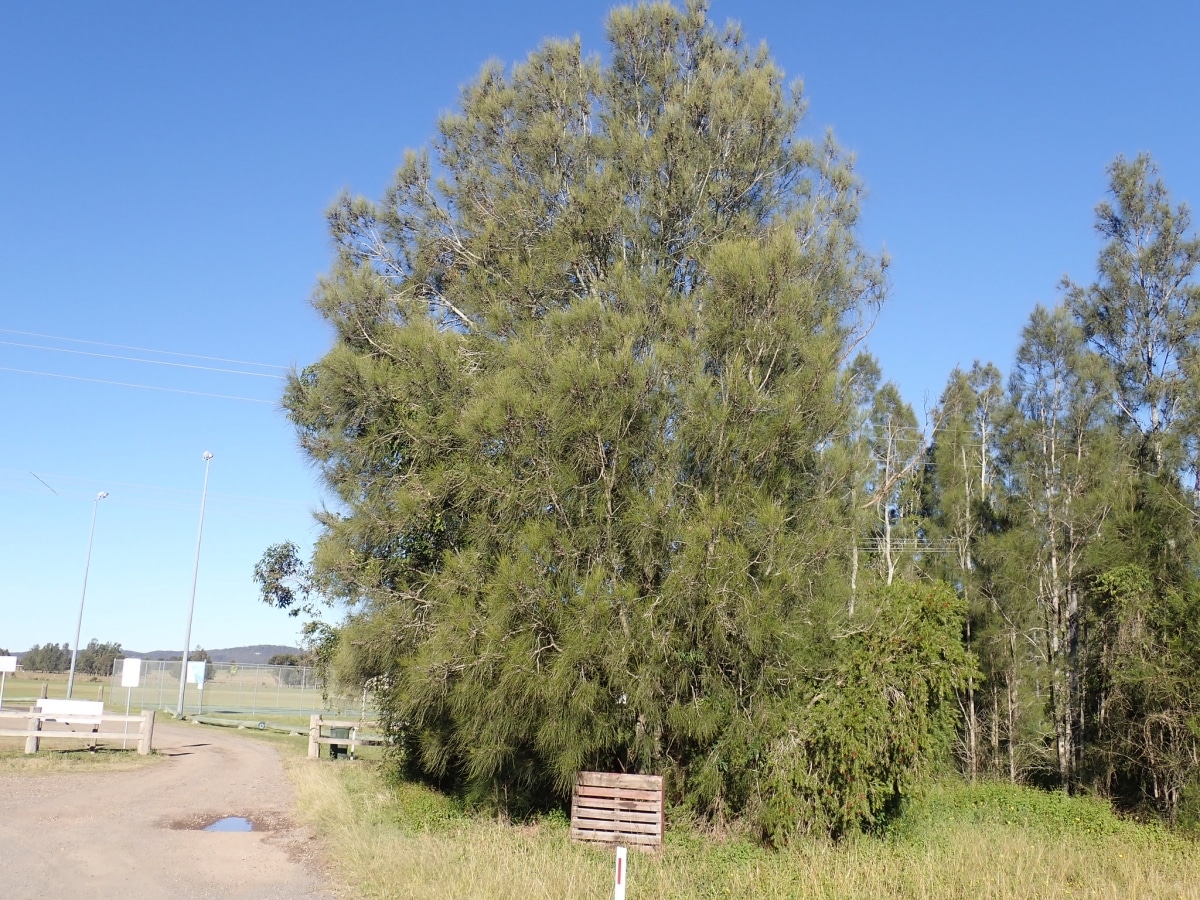
Image - Flickr / Harry Rose
All the Casuarina They are trees that are very reminiscent of pines and other conifers, but that really have nothing to do with them. They grow naturally in Australia and the Pacific Islands, but have been shown to withstand light frosts, especially the species C. equisetifolia, which is often planted on the streets and in temperate-climate gardens as it holds up to seven degrees below zero.
They are often called by the names of Roble female, Palo Hierro, or Palo res. Do you want to know them?
Characteristics of the Casuarina
Casuarina are evergreen plants, that is, they they remain evergreen, with a medium-fast growth rate. Its leaves are thin and long, up to 20cm, and are green or dark green depending on the species. They can reach a height of up to 30 meters, with a more or less straight trunk that cracks as it develops.
When they are grown, we will soon realize that they are not demanding at all. In fact, can grow even in saline soils and in places where rainfall is low. For this reason, if you live near the coast, it is highly recommended to plant some (or some) specimens, as it will also protect the garden from the wind.
Types of Casuarina
The genus is composed of about 15 different species. However, very few are grown in gardens:
Casuarina cunninghamiana
- Image - Wikimedia / Bidgee
- Image – Wikimedia/John Tann from Sydney, Australia
- Image - Wikimedia / Bidgee
It receives the names of river oak, australian pine or simply casuarina. It grows wild in Queensland and New South Wales, and can claim to be the tallest of the genus: reaches 30 meters in height, while the rest stay below 25 meters. It has a pyramidal crown and green branches, similar to those developed by pine trees. It resists up to -10ºC.
Casuarina equisetifolia
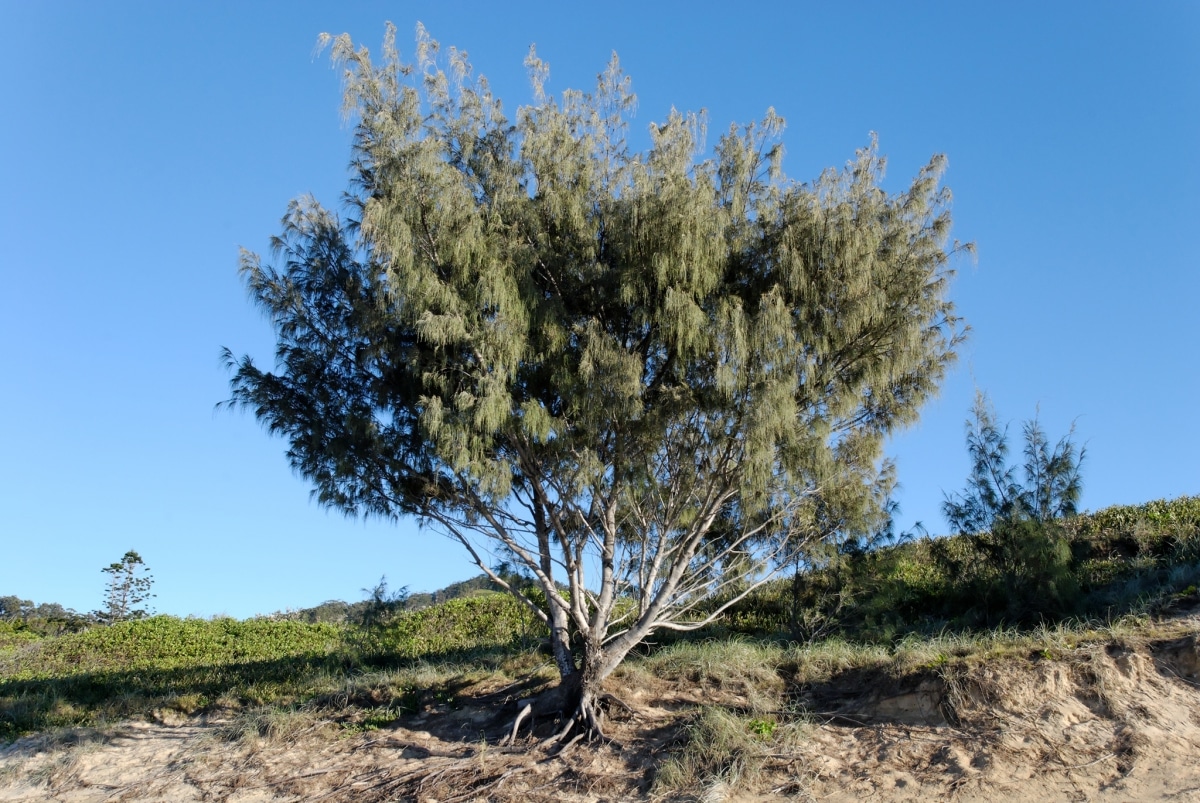
Image - Flickr / Tony Rodd
Known as Australian pine, Paris pine, casuarina ponytail or tree of sadness, this species of tree is semi-deciduous, which means that it does not lose all its leaves. It is native to Australia, but also to Myanmar, Bangladesh, Thailand, Polynesia and Malaysia. Reaches an approximate height of 25 meters, and can branch at a low height from the ground. It is very resistant to salinity, and also resists down to -7ºC.
Glaucous Casuarina
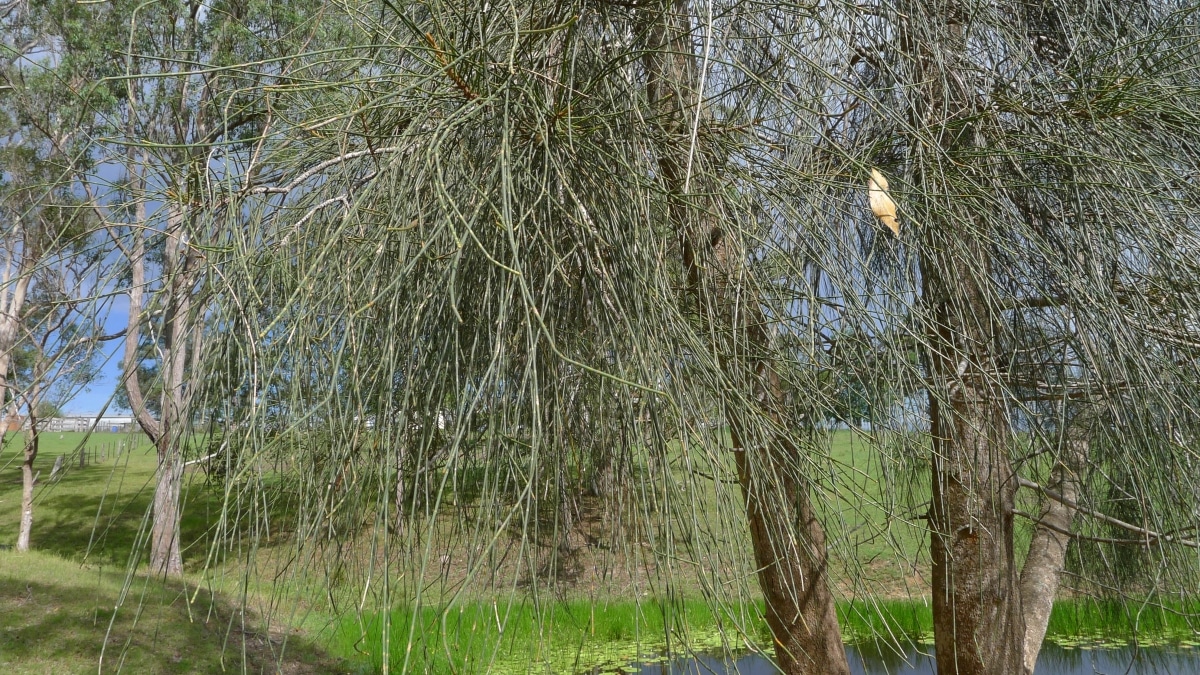
Image - Wikimedia / John Tann
La Glaucous Casuarina is a tree that grows on the east coast of Australia to a height of about 15 meters. It is a very interesting plant, since its roots establish a symbiotic relationship with the Frankia bacterium, which fixes nitrogen to the soil. It resists up to -5ºC.
obese casuarina
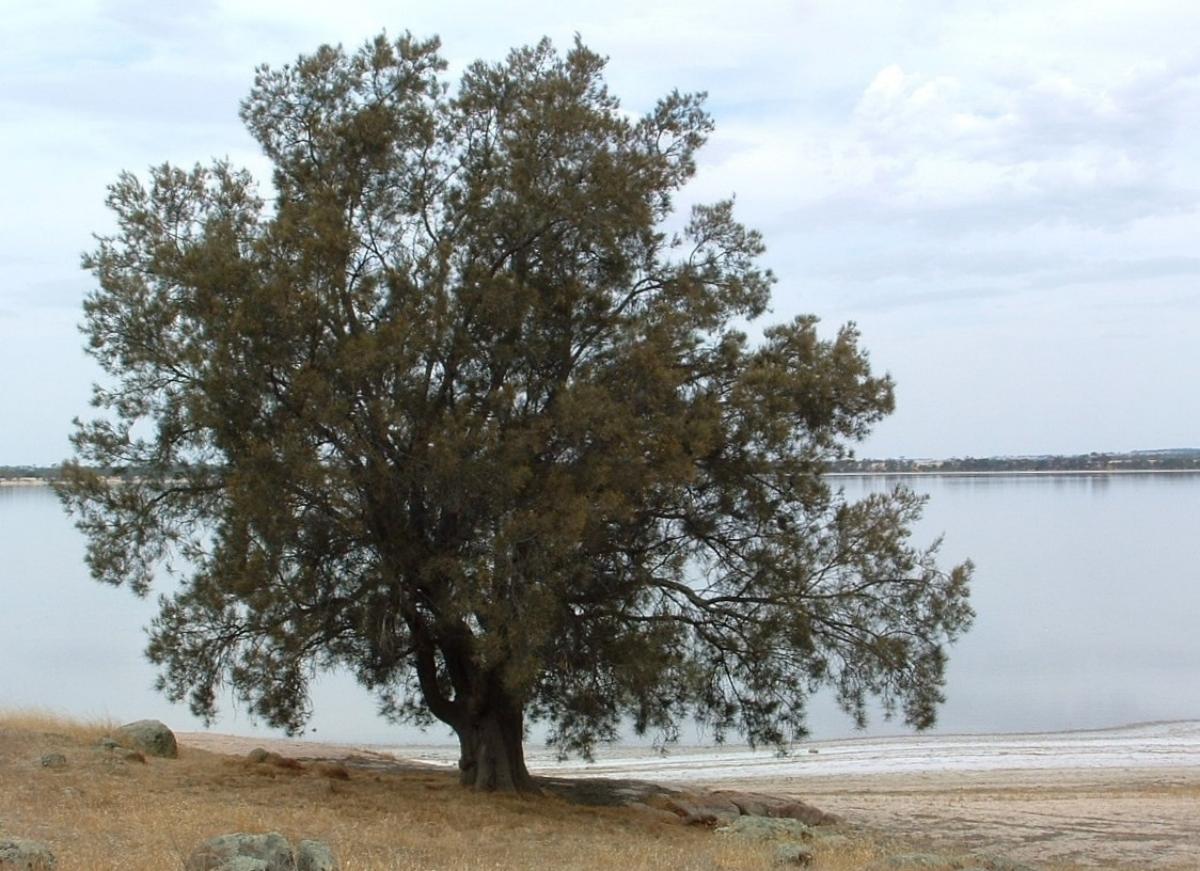
Image – robertpowelltrees.org
It is known as the swamp oak, and is native to New South Wales and Victoria, Australia. Reaches a maximum height of 10 meters, although it can remain as a small tree of 5 meters or even lower, depending on where it is. It tolerates clayey and saline soils, and resists down to -5ºC.
Casuarina stricta
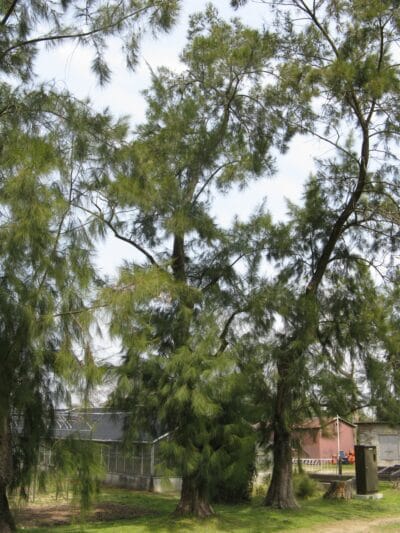
Image - Wikimedia / KENPEI
It is a species known by the common name of pendulous casuarina. She is originally from Australia, and reaches a maximum height of 10 meters. The trunk is tortuous, and has a rounded crown made up of green branches that carry out photosynthesis. It can be grown without problems in poor soils, as well as in saline ones. It resists up to -5ºC.
What are the care that must be given to them?
To have them splendid you have to take into account some things, which are:
Location
It is important that they are planted in an area where they get direct sunlight.. Although they are not considered trees with dangerous roots, it is advisable to plant them at a minimum distance of 5 meters from any construction in order to grow well.
Irrigation and fertilizer
During the first year they have to be watered 2 or 3 times a week in summer and less the rest of the year, in this way its root system will better get used to the new growing conditions. From the second, the risks will be spaced out.
It is not necessary to pay, but it can be done in spring and summer using organic fertilizers, such as cow manure or guano.
Pruning
Casuarinas are not plants that have to be pruned, because doing so would reduce their ornamental value considerably. however yes you can remove dead or broken branches in fall or late winter.
Multiplication
They multiply by seeds in spring. These are sown in pots with culture substrate such as these, covering them with a very thin layer of soil, and then placing them outside, in full sun. So that everything goes smoothly, it is advisable to treat them with a fungicide spray once every 15 days, since this will make it difficult for fungi to damage them.
Plagues and diseases
They are very, very sturdy. However, if they grow in poorly drained soils, mushrooms y oomycetes They will take advantage of the slightest sign of weakness to attack its roots. In addition, the Caterpillars young branches can be eaten.
Plantation
the casuarinas they are planted in the ground in late winter, when no more frosts are going to occur. But yes, we must wait until they have rooted well in the pot, since that way we will ensure that they pass the transplant without problems. How to know?
Well, if roots come out of the holes in it, or if they have been in it for more than 3 years and when we pull the trunk up, as if we wanted to take it out of the container, the root ball comes out without falling apart, then we can plant them in the ground.
What uses does it have?
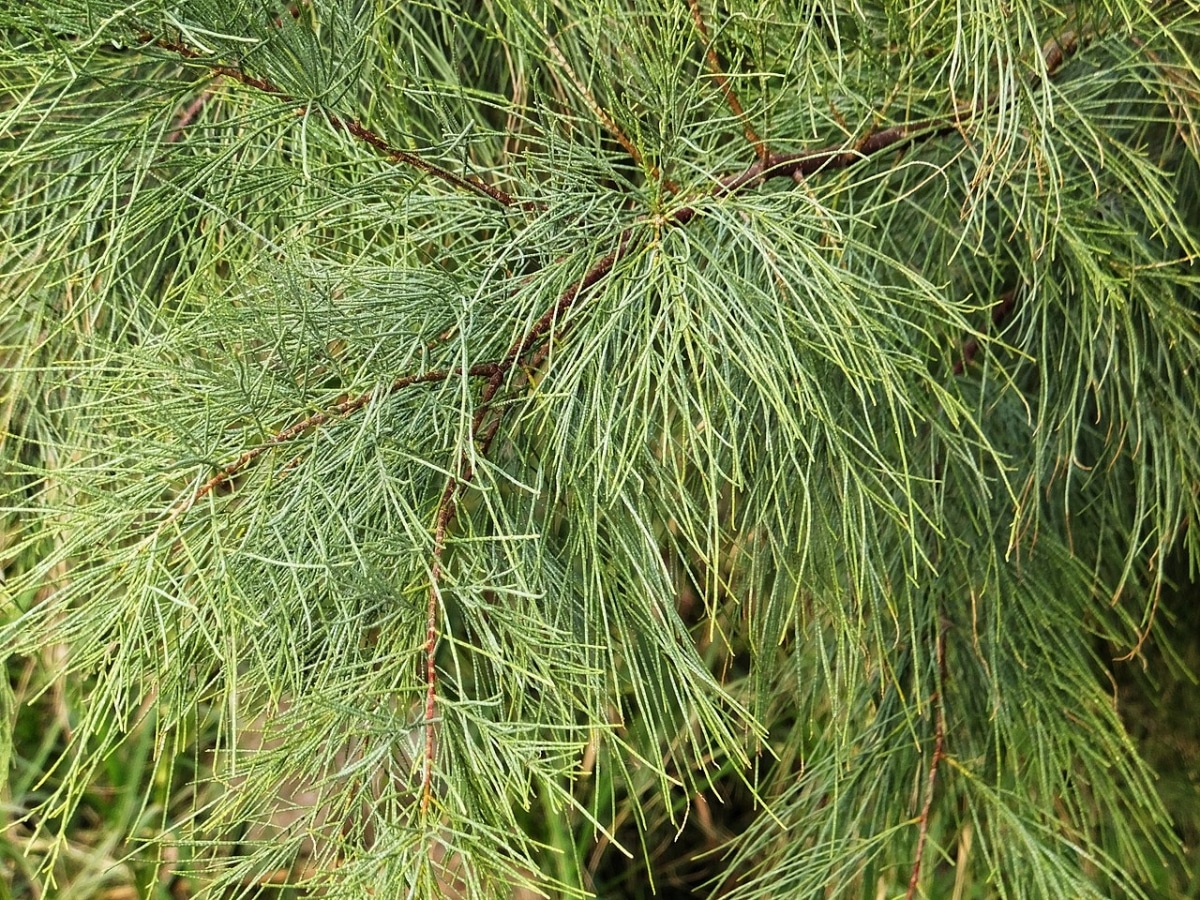
Image - Wikimedia / lienyuan lee
These plants They are widely used to decorate gardens., either as isolated specimens or in alignments. But they are also interesting to avoid or prevent soil erosion, and even casuarina bonsai are made.
The Casuarinas are splendid trees, don't you think?
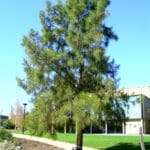
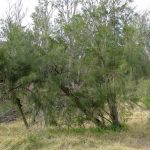
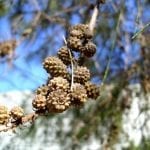
Dear Monica, I would need to know the time of year for the transplant, because I plan to buy some casuarinas soon. Thank you very much, excellent blog!
Hello Ezequiel.
The time to transplant is in spring 🙂
All the best
Hi, I'm Laura, I have casuarinas in my garden, I want to put plants underneath and something that quickly covers a fence for safety, but not even the grass grows, thank you in advance
Hello Laura.
The Casuarina is a plant that does not allow anything to grow underneath. Sorry.
A greeting.
Hi there! I have a field with 4-year-old casuarinas that are only 1 meter tall or less. they have not grown. When I bought the land they were already planted.
Some are dried but most are green. Of 100 plants, only 5/6 are almost two meters, the rest less than 1 meter. They have a distance of 3 meters from each other.
What do you recommend me to do????
Will they have salvation?
Hi July.
They may lack water and / or nutrients. I recommend watering them about 2 times a week in summer, and every 7-10 days the rest of the year. In addition, it is also highly recommended to add organic fertilizers once a month (guano, herbivorous animal manure -if you get them fresh, let them dry in the sun for 10 days-, compost.
Thus, they should start to grow somewhat faster.
A greeting.
Hello Monica, look, I planted a casuarina last year, it is about 2 meters high and with a trunk at its base of about 4 centimeters in diameter, and I would like to plant an already large oleander 1 meter high and with several branches that come out of its base, I know that casuarinas do not let anything grow underneath, but since oleander is a very resistant plant, could I plant it at a distance of 3 meters from the casuarina?
Thank you for your information on the page and best regards!
Luis Carlos
Hi Luis Carlos.
Three meters is a good distance, but the roots of the casuarina and those of the oleander will end up crossing, so the oleander has serious problems.
I do not recommend it. If you had or plan to get a smaller oleander, one of those that are worth 2 euros or less, then it could be interesting to try since, in case it goes wrong, the loss would not be too great. But if not, no.
Regards!
Hello Monica,
Then I will not plant the oleander under the casuarina, I think I will plant it and if you think there will be no problems about two meters west of a robust grevillea that is now about 4 meters and the base of the trunk 6 centimeters in diameter, like this The sun will give you good at two o'clock. Although here in Seville and in summer we have had a sunstroke for years that with a slight exposure would be worth it, in fact, you have to place some plants in pots in the shade, ribbons, aloes, etc. , and plant others better in shady areas at the risk of being burned by the sun.
Greetings and thank you,
Hello Luis Carlos again 🙂
Grevillea and oleander will get along better without a doubt.
Yes, I know the sun of Seville well (a good part of my family is from there hehe). Sometimes there is no choice but to protect some plants.
Well, if you have any more questions, we'll be here.
Regards!
Hello Monica,
I see that you know how the theme of the summer is going here in Seville .. Well, then the grevillea and the oleander will become good friends !.
Well, if you have any questions, I would tell you.
Thanks again and greetings!
Hello Luis Carlos, again.
Yes, in principle you should not have problems with grevillea and oleander planted close to each other.
Oks, well nothing, here we are 🙂
Regards!
Hi Monica… I wanted to know how casuarina reproduces… do you know if you can cut a young twig and place rooting on it or will there be other methods?
Hi Catalina.
Casuarinas multiply only by seeds. Here we explain how.
Regards!